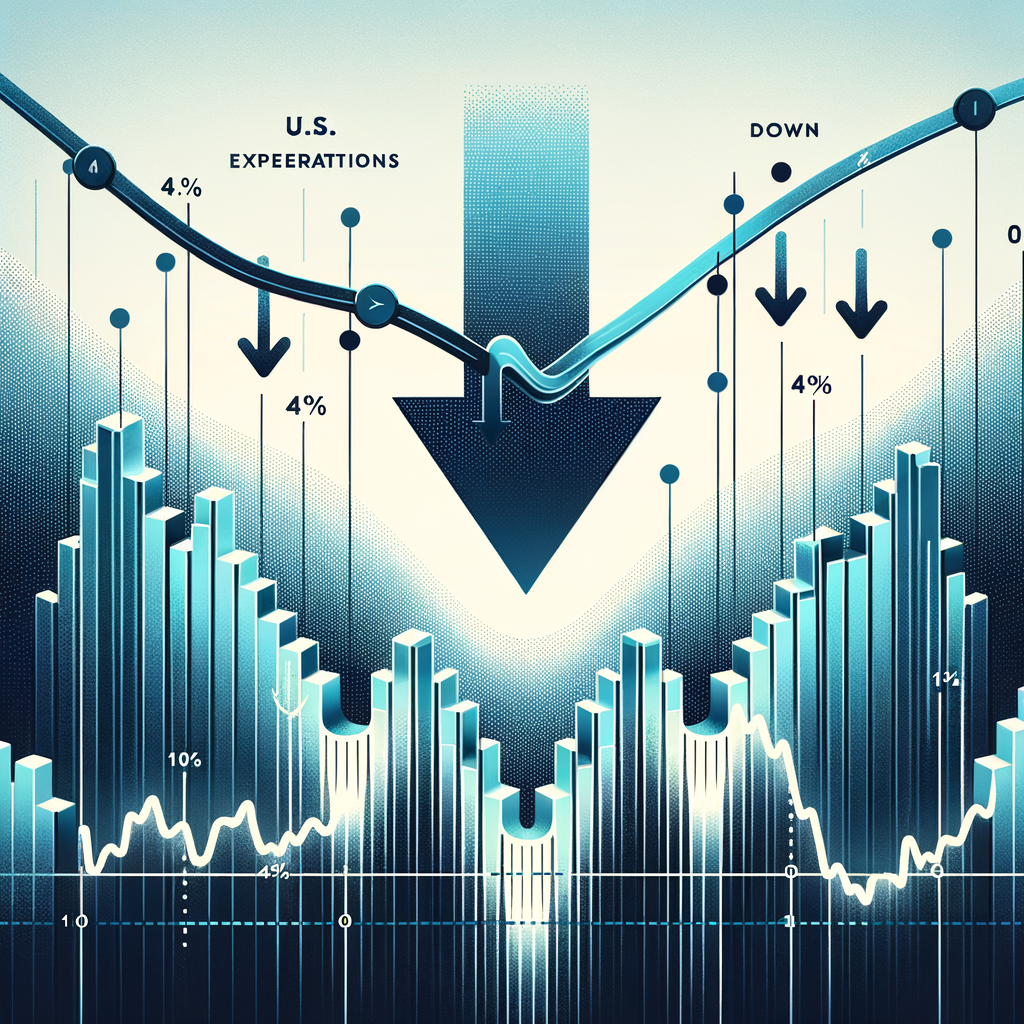Analyzing the Impact of Falling U.S. Inflation Expectations on the Bond Market
U.S. Inflation Expectations Drop, Pushing 10-Year Treasury Yield Below 4%
In a turn of events that has brought a collective sigh of relief to the financial markets, U.S. inflation expectations have taken a noticeable dip. This shift in sentiment has had a direct and positive impact on the bond market, with the yield on the benchmark 10-year Treasury note falling below the 4% threshold. This development is a welcome change for investors who have been grappling with the specter of persistent inflation and the aggressive interest rate hikes that have characterized much of the past year.
The decline in inflation expectations can be attributed to a confluence of factors that signal a cooling economy. Recent data suggests that price pressures are beginning to ease, with core inflation metrics showing signs of moderation. Additionally, the Federal Reserve’s steadfast commitment to reining in inflation appears to be bearing fruit, as their monetary policy adjustments start to permeate through the economy. As a result, investors are recalibrating their outlook, anticipating a less aggressive rate hike trajectory in the coming months.
This newfound optimism has rippled through the bond market, leading to a rally in Treasury prices. When bond prices rise, yields fall, and the inverse relationship between the two has been on full display. The drop in the 10-year Treasury yield is particularly noteworthy as it serves as a benchmark for various consumer and business loans, including mortgages. Lower yields translate to lower borrowing costs, which can stimulate economic activity by making credit more affordable for consumers and businesses alike.
Moreover, the decline in yields is also indicative of a shift in investor sentiment. In times of uncertainty, bonds are often seen as a safe haven, and the recent dip in yields suggests that investors are becoming more confident in the stability of the economy. They are moving away from the risk-off mentality that dominated much of the previous period, where fears of runaway inflation led to a flight to quality and higher yields.
The bond market’s reaction is also a testament to the interconnectedness of economic indicators and market expectations. As inflation expectations moderate, the bond market responds in kind, creating a feedback loop that can further stabilize prices. This dynamic is crucial for the overall health of the economy, as it helps to prevent the kind of volatility that can lead to economic downturns.
Furthermore, the easing of inflation expectations and the subsequent drop in Treasury yields have broader implications for the global economy. The United States’ economic policies and market movements have a significant influence on international markets. A more stable U.S. bond market can lead to increased global investor confidence, potentially spurring investment and growth worldwide.
In conclusion, the recent drop in U.S. inflation expectations and the corresponding fall in the 10-year Treasury yield below 4% is a positive development for the bond market and the economy at large. It reflects a growing belief that inflation may be getting under control, which could pave the way for a more balanced and sustainable economic environment. While challenges remain, the current trend offers a glimmer of hope that the worst of the inflationary pressures may be behind us, setting the stage for a period of recovery and growth. As the economic landscape continues to evolve, the bond market will remain a critical barometer of investor confidence and economic health.
The Relationship Between 10-Year Treasury Yields and U.S. Inflation Expectations Dynamics
U.S. Inflation Expectations Drop, Pushing 10-Year Treasury Yield Below 4%
In a turn of events that has brought a collective sigh of relief to investors and policymakers alike, U.S. inflation expectations have taken a noticeable dip. This shift in sentiment has had a direct and positive impact on the bond market, with the 10-year Treasury yield falling below the 4% threshold. This development is a beacon of hope for an economy that has been grappling with the specter of persistent inflation and the prospect of aggressive monetary tightening.
The relationship between inflation expectations and Treasury yields is a dance of economic indicators, where each step is carefully watched by market participants. As inflation expectations moderate, the pressure on the Federal Reserve to continue its hawkish stance on interest rates eases. This, in turn, reduces the yield investors demand from long-term government debt, reflecting a more optimistic outlook for the economy’s trajectory.
The recent drop in inflation expectations can be attributed to a confluence of factors. Commodity prices have shown signs of stabilization, and supply chain disruptions, a significant contributor to inflationary pressures, are beginning to untangle. Moreover, the labor market, while still robust, is showing early signs of cooling, which could temper wage growth and, by extension, inflation. These developments suggest that the worst of the inflationary surge may be behind us, and the economy could be heading towards a more balanced growth path.
The fall in the 10-year Treasury yield is a critical indicator of this changing economic landscape. As a benchmark for mortgage rates and other important financial instruments, the yield’s decline signals lower borrowing costs for consumers and businesses. This could spur investment and spending, providing a boost to economic activity without stoking further inflation. The housing market, which has been particularly sensitive to interest rate changes, stands to benefit from this environment, potentially easing one of the most acute pain points of the recent inflationary period.
Furthermore, the drop in yields and inflation expectations has implications for the U.S. dollar’s strength. A less aggressive rate hike path may take some steam out of the dollar’s rally, offering respite to emerging markets and global trade. A softer dollar could help alleviate inflation in countries that rely on imports priced in the U.S. currency, contributing to a more synchronized global economic recovery.
Investors, too, are finding reasons for optimism. The equity markets have responded positively to the easing of inflation fears, with sectors sensitive to interest rates, such as technology and real estate, showing signs of revival. The shift in expectations has also led to a recalibration of portfolio strategies, with a renewed interest in fixed-income assets that had been shunned during the height of inflation concerns.
In conclusion, the recent drop in U.S. inflation expectations and the corresponding decline in the 10-year Treasury yield are harbingers of a potentially more stable economic period ahead. While challenges remain, including geopolitical tensions and the ongoing pandemic recovery, the current dynamics offer a glimmer of hope that the U.S. economy may be transitioning from a period of uncertainty to one of more predictable and sustainable growth. As the dance between inflation expectations and Treasury yields continues, the market will remain attuned to each step, ready to adjust to the rhythm of an evolving economic narrative.







